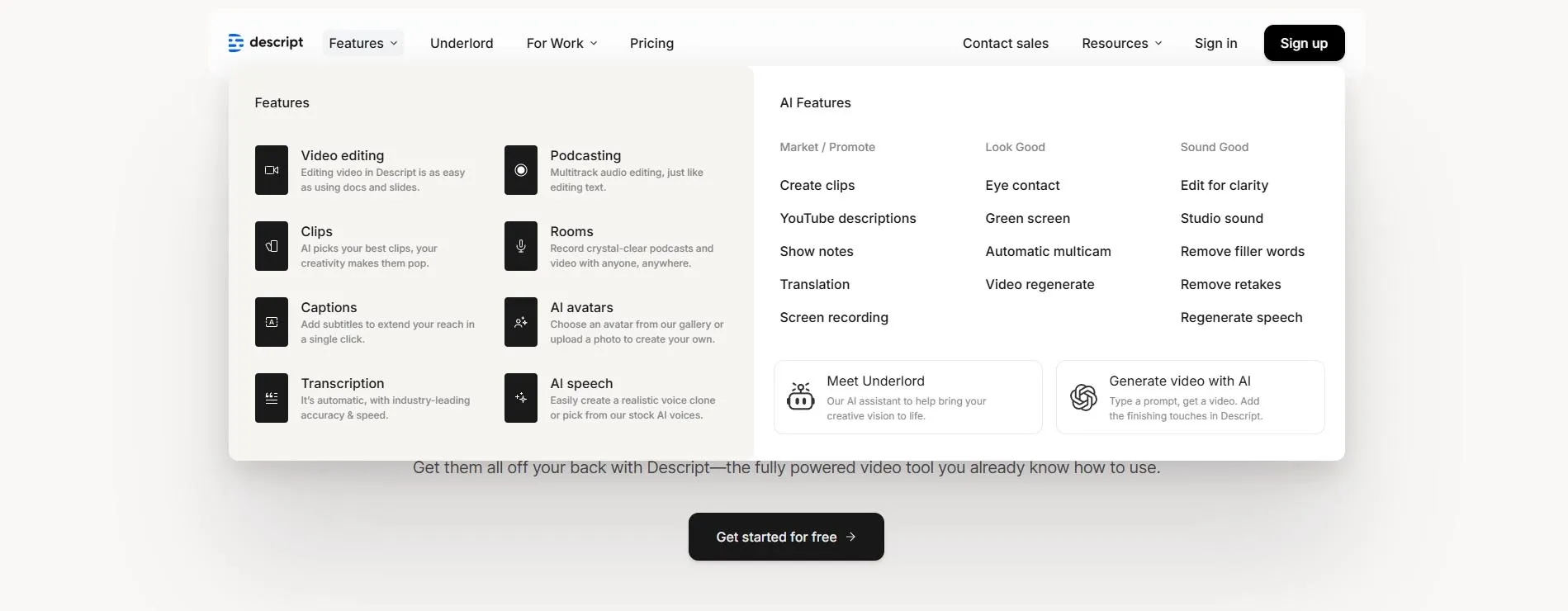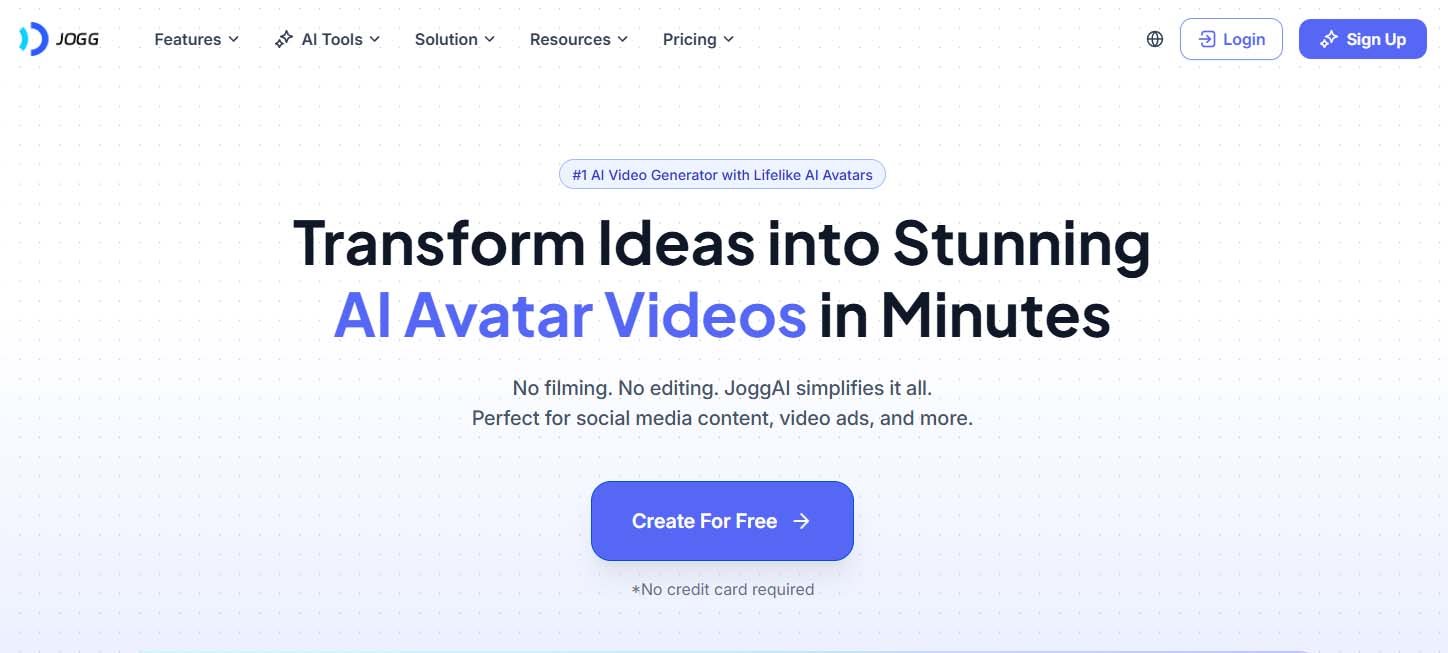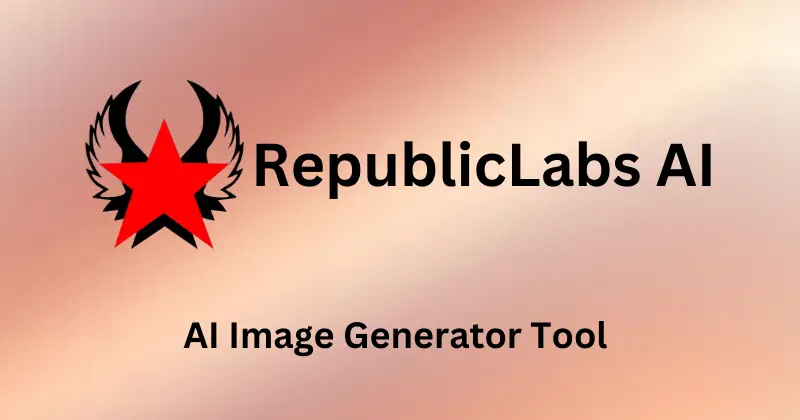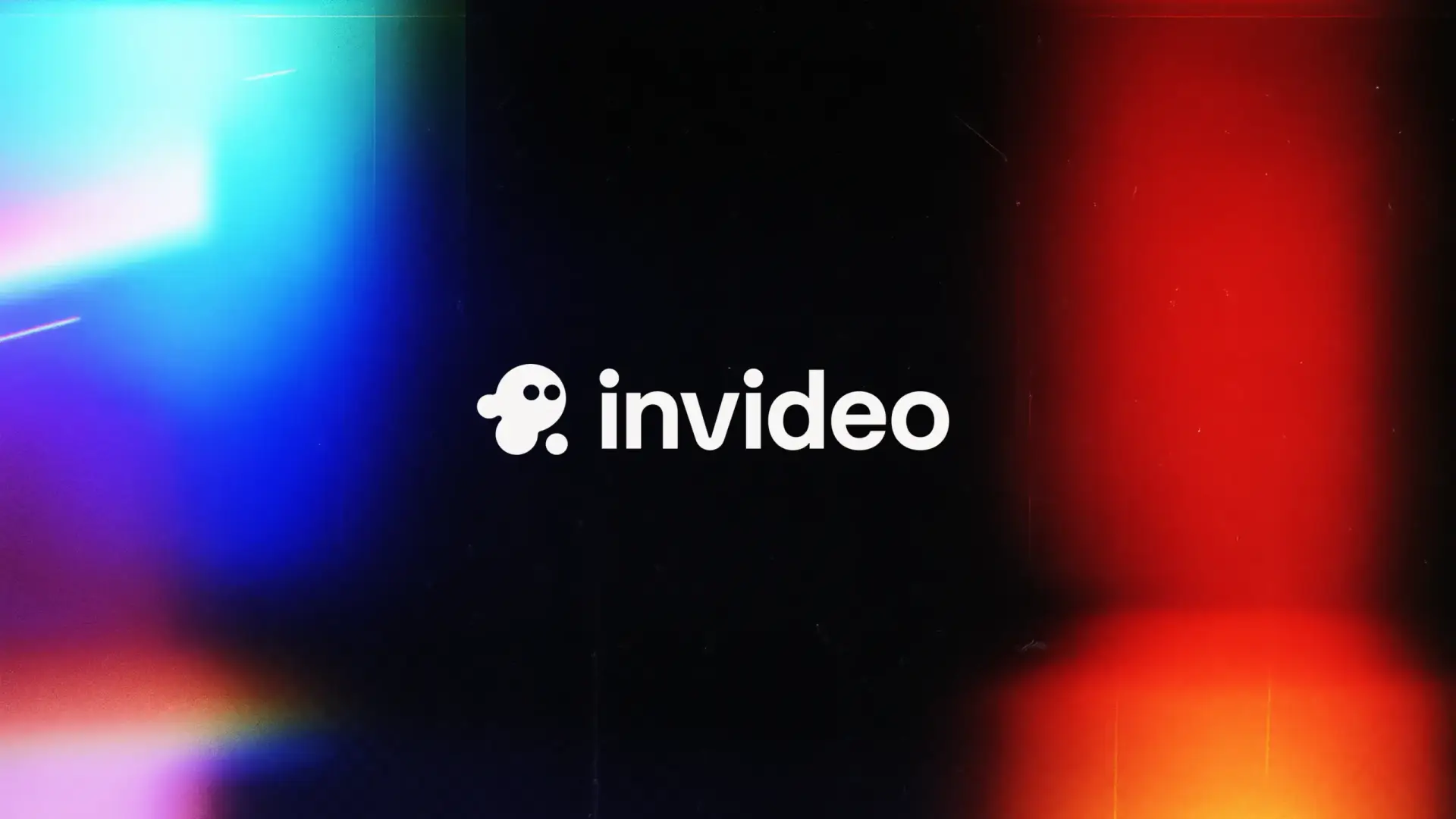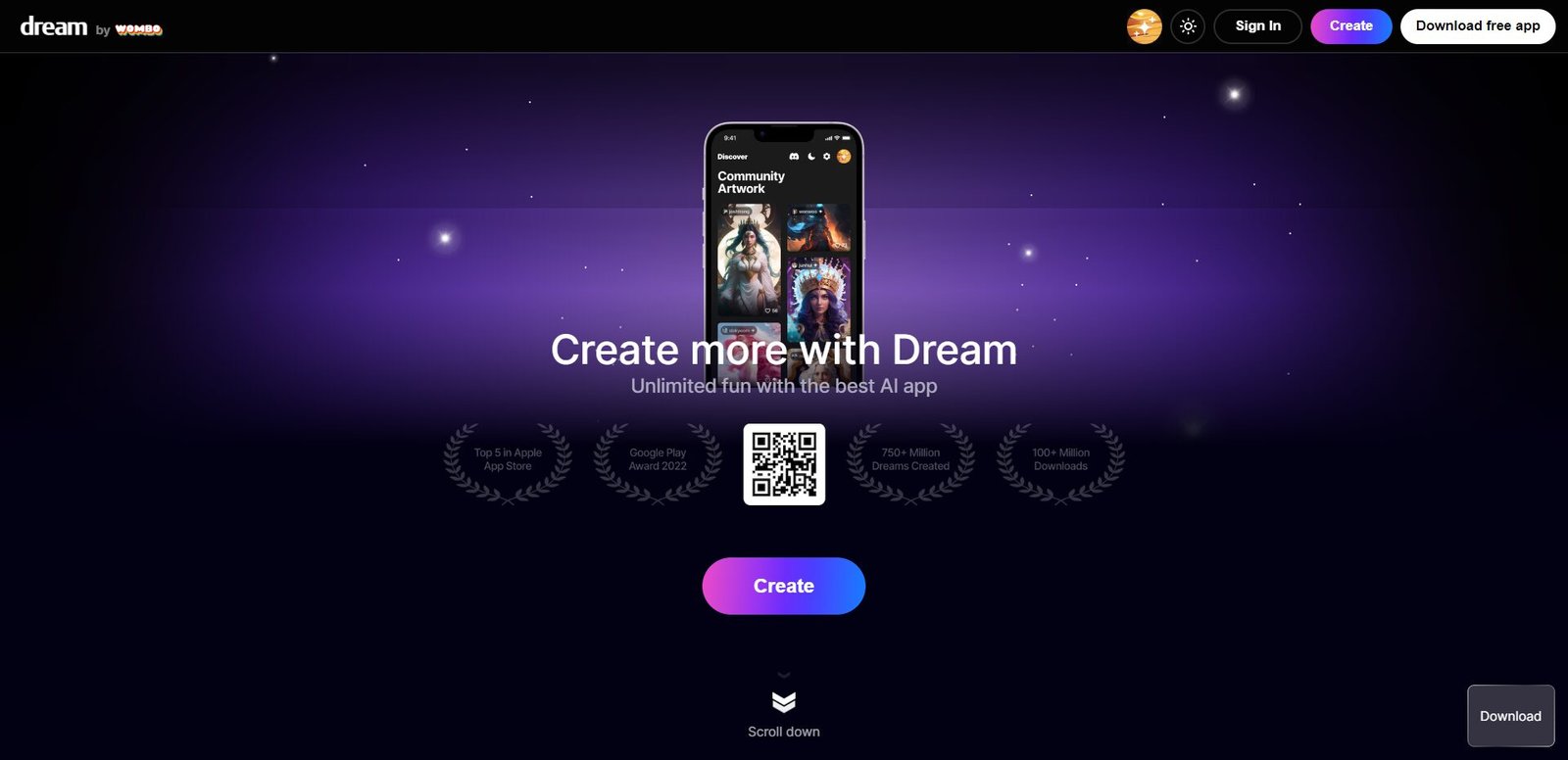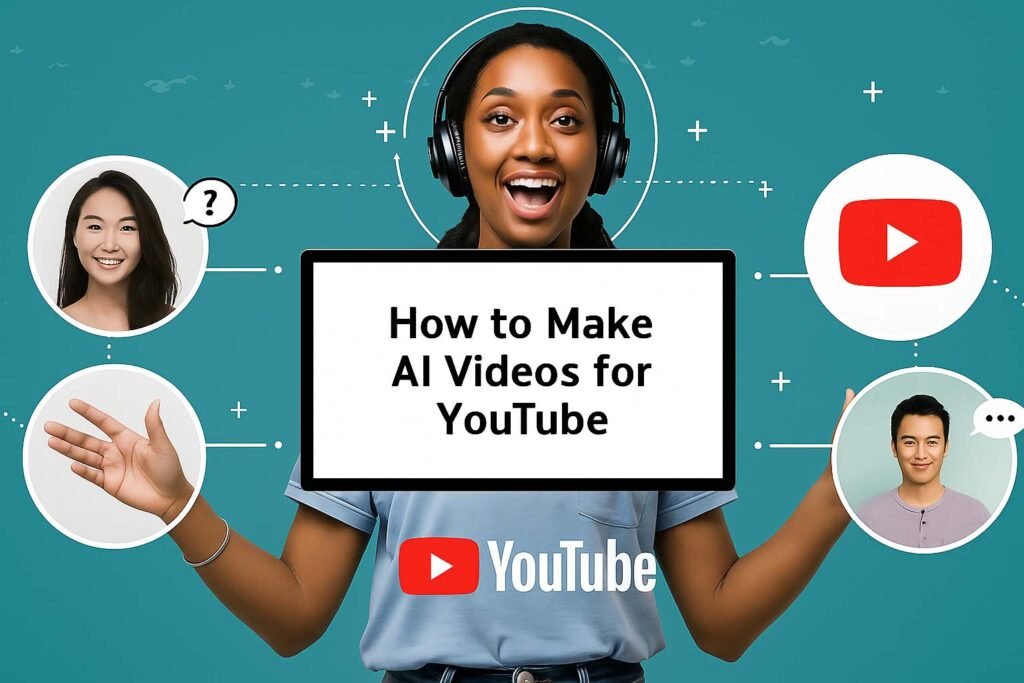The 15+ Best AI Video Generators of 2025 (The Ultimate Guide)
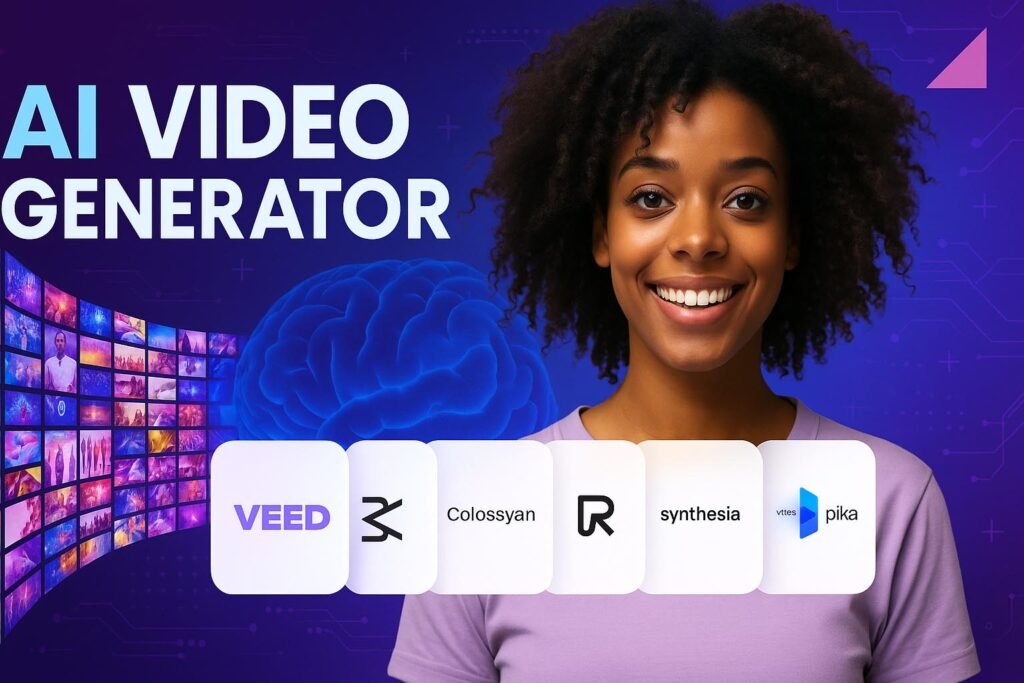
The AI Video Revolution: Your Ultimate 2025 Guide
The days when video production was a grueling process, demanding specialized teams, expensive equipment, and immense resources, are officially over. We are now in the midst of a seismic shift in content creation, with artificial intelligence leading a revolution that makes professional-grade video accessible to everyone, from solo creators to global corporations. This explosion of new tools has eased the “relentless pressure to produce captivating video content,” but it has also created a new challenge: how do you choose the right tool in a crowded and confusing market?
Today’s content creators and marketers face a deluge of options, each promising spectacular results at the click of a button. But the reality is more complex. Between hyper-realistic generative models like Sora and Veo, intelligent editors like Descript, and lifelike avatar platforms like Synthesia, distinguishing marketing hype from genuine value has become a critical skill.
This guide is more than just another list. It is a comprehensive, analytical report designed to be the definitive resource for any creator or marketer looking to harness the power of AI in 2025. We have researched, analyzed, and evaluated to provide you with a clear perspective, helping you make informed, strategic decisions. Our goal is to move beyond a simple feature showcase to a deep understanding of how these tools work, who they are for, and how they can serve your specific objectives. Whether you aim to boost productivity, enhance content quality, or explore new creative frontiers, this guide will equip you with the knowledge and confidence to select the perfect partner for your AI video journey.
How We Evaluate: Our Criteria for the Best AI Video Generators
To build reader trust and provide an objective assessment, a rigorous and transparent framework is essential. Choosing the “best” tool is not an absolute judgment; it depends heavily on the user’s needs, goals, and budget. Therefore, we evaluated each tool in this guide based on five core criteria, with an overarching focus on a crucial concept: use-case alignment.
The problem users face isn’t a lack of features, but a lack of clarity on which features serve their specific purpose. An advanced cinematic tool like LTX Studio is a poor choice for a marketing team needing to produce quick social media clips. Conversely, a filmmaker might find a template-based tool like invideo AI too restrictive. Our evaluation, therefore, doesn’t just look at features in a vacuum; it analyzes how well those features serve a specific purpose, adding a layer of strategic advice that helps the reader make the right choice.
Here are the criteria we used:
1. Generative Model Quality & Realism
This is the heart of any generative tool. We assessed the underlying model’s ability to produce coherent, high-resolution visuals with an accurate understanding of physics, lighting, and object interaction. Is the motion natural? Are characters consistent across scenes? This criterion is critical for text-to-video tools.
2. Creative Control & Customization
A powerful tool must also be directable. We analyzed the degree of control offered to the user, from simple prompt adjustments to advanced features like Runway’s Motion Brush, character locking, and precise camera controls. Tools that allow for deeper customization empower creators to realize their unique vision rather than producing generic content.
3. Feature Set & Workflow Integration
Great video goes beyond simple generation. We evaluated the complete feature set that solves real-world workflow problems: text-based editing (like Descript), long-form content repurposing (like Peech and revid.ai), digital avatar creation, automated translation, and seamless integration with other tools in the production stack.
4. Ease of Use & Support Resources
An intuitive user interface is crucial, especially for beginners. We assessed how easy each tool is to learn and the availability of high-quality support resources like tutorials, comprehensive documentation, and active communities where users can find help and inspiration.
5. Pricing, Value, and ROI
We carefully analyzed the different pricing models—whether based on credits, minutes, or monthly subscriptions. We looked beyond the price tag to evaluate the value a user receives for their money. Does the tool provide a tangible return on investment by saving time, reducing production costs, or enabling new types of content that were previously impossible? A strong free plan or trial is a major positive factor that allows users to test before committing.
The Best AI Video Generators of 2025: At a Glance
To simplify your decision-making process, this table offers a quick and comprehensive comparison of the leading tools on the market. It’s designed to be an instant reference to help you rapidly identify the most suitable options for your needs.
| Tool | Best For | Standout Feature | Max Resolution | Free Plan & Limitations | Starting Price | Our Rating |
|---|---|---|---|---|---|---|
| Google Veo 3 | Studio-quality cinematic realism | Integrated audio generation & superior physics | 1080p (4K in development) | None, requires Google AI Pro subscription | $19.99/month | ⭐ 4.9/5 |
| Kling AI | Dynamic motion & complex physics | Hyper-realistic motion & image-to-video | 1080p (Pro Mode) | Yes, limited daily credits & watermark | $6.99/month | ⭐ 4.8/5 |
| Sora (OpenAI) | Complex narrative storytelling | Deep natural language understanding & in-video editing tools | 1080p | None, requires ChatGPT Plus subscription | $20/month | ⭐ 4.7/5 |
| Runway | Advanced creative control & integrated toolset | “AI Magic Tools” suite (Gen-3, Act One) | 1080p | Yes, 125 one-time credits | $12/month (billed annually) | ⭐ 4.6/5 |
| Synthesia | Corporate training & marketing with avatars | Avatar realism & 140+ language support | 1080p | Yes, 3 mins/month with 9 avatars | $18/month (billed annually) | ⭐ 4.7/5 |
| Heygen | Scalable avatar videos with creative features | Voice cloning & custom Avatar IV model | 4K | Yes, 3 videos/month with watermark | $24/month (billed annually) | ⭐ 4.7/5 |
| Descript | Editing video & podcasts like text | Text-based workflow & Underlord toolkit | 4K | Yes, 1 transcription hour/month & watermark | $16/month (billed annually) | ⭐ 4.7/5 |
| Higgsfield AI | High-aesthetic, realistic photos & videos | “Soul” model for photorealism & UGC Builder | 1080p | Yes, 5 daily credits | $9/month | ⭐ 4.5/5 |
| invideo AI | Rapid social media video creation | Idea-to-final-video from a single prompt | 1080p | Yes, 10 mins/week & 4 watermarked exports | $28/month | ⭐ 4.2/5 |
| revid.ai | Repurposing long-form content into viral clips | Automatic hook detection & formatting | 1080p | Yes, limited free tool suite | $19/month | ⭐ 4.3/5 |
| FlexClip | Easy video creation with templates & AI | All-in-one editor with templates & AI features | 4K | Yes, 720p downloads & watermark | $11.99/month (billed annually) | ⭐ 4.7/5 |
| Peech | Automating video content for marketing | Content repurposing with strict brand consistency | 1080p | Yes, 3 videos/month with watermark | $100/month (billed annually) | ⭐ 4.1/5 |
| Vyond | Animated character videos | Vyond Go: Text-to-fully-editable animation | 1080p | Yes, full-featured trial | $58/month (billed annually) | ⭐ 4.4/5 |
| Wondershare Filmora | Traditional editing + AI tools | Wide range of assistive AI features | 4K | Yes, with watermark | $49.99/year | ⭐ 4.0/5 |
| Capsule | Corporate video production workflows | Fully brandable professional templates | 1080p | Yes, for standard visual components | Custom (Enterprise) | ⭐ 4.2/5 |
| LTX Studio | Extreme creative control for filmmakers | Idea-to-storyboard-to-video workflow | 720p | Yes, for personal use with compute limits | $15/month | ⭐ 4.0/5 |
In-Depth Reviews: The Ultimate AI Video Toolkit
This is the core of our guide, where we provide a detailed analysis of each tool. Every review is designed with a consistent structure, allowing you to easily compare options and make an informed decision.
Sora (Web)
Best for: Complex narrative storytelling and creating stunning cinematic scenes from simple text prompts.
Expert Analysis:
After much anticipation, OpenAI’s Sora model is available and lives up to the hype with its ability to imagine surprisingly complex and realistic scenes. Unlike competitors that may require complex prompt engineering, Sora stands out for its deep understanding of natural language, enabling it to translate narrative ideas into visually and emotionally coherent videos.
Accessible via ChatGPT, it offers two ways to start: the traditional text-to-video experience and the more unique “Storyboard” feature, which allows users to add consecutive scenes while maintaining character and visual style consistency across cuts. However, the model still faces challenges, particularly with “object permanence” and complex physical interactions, where human and animal movements can sometimes appear odd. Nevertheless, landscapes and cartoon aesthetics look absolutely stunning.
Key Features:
High-Quality Text-to-Video: Accurately interprets complex prompts to create detail-rich scenes.
Storyboard Feature: Allows for multi-shot video creation while maintaining character and style consistency.
Remix Feature: Enables complete style changes, such as turning a realistic scene into an animation.
Recut Feature: Provides tools to easily adjust video pacing and reorder scenes.
Animate from Image: Can bring still images to life based on instructions.
Pros & Cons:
Pros:
Stunning results from simple prompts, strong narrative understanding, innovative in-video editing tools.
Cons:
Access is still limited (requires a paid subscription), sometimes struggles with physical interaction accuracy, and currently lacks integrated audio generation.
Pricing:
Available as part of the ChatGPT Plus subscription for $20/month, offering 50 priority video generations at 720p quality and up to 5 seconds each.
The Pro plan at $200 removes the watermark, increases limits to 500 priority generations, upgrades to 1080p, and extends duration to 20 seconds each.
Runway (Web, iOS)
Best for: Creators who need an integrated suite of tools for advanced creative control over generative video.
Expert Analysis:
Runway feels like a creative magic wand; it’s not just a video generator but a complete studio that merges generation with editing. Its flagship model, Gen-3 Alpha, produces high-fidelity videos but requires more prompt engineering skill compared to Sora. What truly sets Runway apart is its vast collection of “AI Magic Tools” that go beyond simple generation. The “Act-One” feature is unique, allowing the transfer of a real actor’s performance to any AI-generated character, infusing it with life and emotion. Additionally, it provides tools for background removal, super slow-motion, subtitle generation, and more. While the interface can seem professional and complex at first, the tools are surprisingly easy to use. However, the learning curve for full model control is steep, and the credit-based system can become costly for large projects.
Pros & Cons:
Pros:
Advanced and diverse AI toolset, excellent learning content (Runway Academy), precise control over motion and effects.
Cons:
Steep learning curve to master the model, credit system can be expensive, realism is slightly below top-tier models like Veo 3.
Pricing:
A free plan is available with 125 one-time credits. The Standard plan starts at $12/user/month (billed annually), unlocking Gen-3 Alpha, providing 625 monthly credits, removing the watermark, and increasing export quality.
TRY Runway
Google Veo 3 (Web)
Best for: Agencies, production studios, and commercial campaigns requiring the highest level of cinematic realism and integrated sound.
Expert Analysis:
Google Veo 3 currently represents the pinnacle of generative video quality. The model excels at simulating realistic physics, accurate lighting, and stunning detail, making its output look as if it were shot with a professional camera. The most revolutionary feature of Veo 3 is its ability to generate audio natively, including sound effects, ambient noise, and even dialogue synchronized with lip movements, eliminating a major step in post-production.
However, this power comes with limitations. Access to Veo 3 is still restricted and requires a subscription to Google’s paid AI plans, and it is not designed for beginners. It’s a tool aimed at replacing large-scale production processes, not for creating quick social media content. The model is also accessible through partner platforms like Leonardo.Ai and Higgsfield, offering a more accessible and lower-cost entry point.
Key Features:
Superior Video Quality: High-definition, photorealistic outputs.
Integrated Audio Generation: Adds music, sound effects, and synchronized dialogue directly via the prompt.
Exceptional Prompt Adherence: Excels at understanding complex prompts related to lighting and cinematography.
Improvements over Veo 2: Veo 3 introduces more realistic visuals and integrated sound, whereas Veo 2 focused on high-quality silent video.
Pros & Cons:
Pros:
Best-in-class visual and audio quality, realistic physics, excellent understanding of cinematic prompts.
Cons:
Limited access, not beginner-friendly, higher cost, short video duration (currently 8 seconds).
Pricing:
No free plan. Access requires a Google AI Pro subscription at $19.99/month or higher plans. It can be accessed more affordably via partner platforms like Leonardo.Ai (starting at $10/month).
TRY Google Veo 3
Kling AI (Web)
Best for: Creating videos with dynamic motion and complex physics, and transforming still images into living scenes.
Expert Analysis:
Kling, developed by Chinese tech company Kuaishou (TikTok’s parent company), may not have the same global name recognition as Sora or Veo, but it excels spectacularly in specific areas. Its true strength lies in motion simulation. Kling can generate scenes involving fast, complex movement with a realism that sometimes surpasses its competitors. It’s also excellent at maintaining character consistency across scenes.
The “Professional Mode” offers the ability to generate videos in 1080p resolution, which is a significant advantage. Additionally, it includes powerful features like a motion brush to direct the movement of specific elements. While its interface can be less intuitive than some rivals, its image-to-video results are among the best on the market, making it an indispensable tool for visual artists and animators.
Key Features:
Advanced Motion Physics: Excels at depicting fast and dynamic movement.
Professional Mode: Allows for high-quality 1080p video exports.
Image-to-Video: One of the strongest tools in this category, preserving detail and aesthetics.
Motion Brush: Lets users define motion paths for specific elements within an image.
Realistic Avatars: Offers over 50 realistic avatars for use in videos.
Pros & Cons:
Pros:
Exceptional motion and physics quality, 1080p resolution, high customization, affordable pricing plans.
Cons:
User interface can be less intuitive, may not match Sora’s quality in complex narrative storytelling.
Pricing:
A free plan is available that provides daily credits upon login. Paid plans start with the Standard plan at $6.99/month, with Pro and Premier tiers for additional features like Professional Mode and watermark removal.
TRY Kling AI
Heygen (Web)
Best for: Creating scalable marketing and educational videos using high-quality digital avatars and creative features.
Expert Analysis:
Heygen emerges as a strong and direct competitor to Synthesia, offering a comprehensive platform for creating videos with digital avatars. What sets Heygen apart is its focus on creative flexibility and ease of use, with a Canva-like interface that makes production intuitive.
Heygen offers powerful features like text-to-video, audio-to-video, and a “Talking Photo” feature that animates portraits impressively. For marketers, Heygen provides “endless scalability” by producing countless video variations with a simple script tweak, along with “one-click localization” to reach a global audience. For educators, a “digital teacher” can be used to create engaging and interactive learning materials. The quality of the avatars, especially with the Avatar IV model, is highly realistic, with natural lip-sync and movements.
Key Features:
High-Quality Avatars: Over 500 stock avatars, with the option to create a Custom Avatar.
Text & Audio to Video: Multiple ways to create content with ease.
Talking Photo: Animate still photos to make them speak.
Voice Cloning: Create a digital version of your voice for use in videos.
Multi-Language Support: Supports over 175 languages and dialects.
4K Export: Available on higher-tier plans.
Pros & Cons:
Pros:
User-friendly interface, excellent avatar quality, unique creative features, a good free plan to start.
Cons:
Advanced features like watermark removal and high-resolution export require a paid plan.
Pricing:
A free plan is available, allowing for 3 videos per month (up to 3 minutes) with a watermark. The Creator plan starts at $29/month ($24 when billed annually) and provides unlimited videos, watermark removal, and 1080p quality.
TRY HeyGen
invideo AI (Web)
Best for: Rapidly creating social media videos from a single text prompt, especially for faceless content.
Expert Analysis:
invideo AI takes the “idea-to-final-video” concept seriously, transforming a single text prompt into a near-publish-ready video in minutes. The AI works in the background to write a script, search media libraries for suitable clips and images, and assemble them with a voiceover, text overlays, music, and transitions. This makes it an incredibly powerful tool for creating content at scale, particularly for “Faceless” YouTube channels or videos that rely heavily on B-roll footage.
The text-prompt editing method is impressive and accurate; you can simply type “add subtitles” or “change the music” to make adjustments. However, user experiences suggest the final product often lacks a human touch and can feel generic. It is therefore best viewed as an excellent tool for creating a strong first draft or assembling B-roll, rather than a final solution for direct publishing without edits.
Key Features:
Full Video Generation from Prompt: Automates the process of scripting, media sourcing, and assembly.
Text-Prompt Editing: An intuitive and fast way to make edits to the video.
Large Media Library: Access to iStock media on paid plans.
Multi-Language Support: Allows for content creation for a global audience.
Voice Cloning & Avatars: Additional features for creating custom content.
Pros & Cons:
Pros:
Extremely fast production, easy for beginners to use, ideal for scaling content, accurate text-prompt editing.
Cons:
The final output can be generic and require tweaking, the interface can be a bit confusing at first, and the quality of the AI voiceover is not always perfect.
Pricing:
A free plan is available offering 10 minutes of generated video per week and 4 exports with a watermark. The Plus plan starts at $28/month, increasing the limit to 50 minutes/month and providing access to iStock footage and unlimited exports.
TRY invideo AI
Higgsfield AI (Web)
Best for: Creators and brands seeking to produce high-aesthetic, hyper-realistic photos and videos, especially for fashion and user-generated content (UGC).
Expert Analysis:
Higgsfield AI positions itself as a specialist in aesthetics and realism. Its flagship feature, “Higgsfield Soul,” is a text-to-image model focused on producing “mobile photography-grade” images with meticulous attention to skin texture, fabric, and lighting details. This makes it ideal for fashion bloggers and brands.
The platform extends beyond images to offer a powerful suite of video tools. The “UGC Builder,” powered by the Veo 3 model, simplifies the creation of content that mimics user-generated styles, which is vital for modern marketing campaigns. The tool allows you to upload an image or select an avatar, define camera motion, emotion, accent, and even background sounds, giving you complete directorial control.
Other features like “Higgsfield Canvas” (for adding products to images) and “Higgsfield Speak” (for making avatars talk with natural lip-sync) make it an integrated platform for a sophisticated creative workflow.
Key Features:
Higgsfield Soul: Generates hyper-realistic, high-aesthetic images with over 50 preset styles.
UGC Builder: A powerful tool for creating UGC-style videos with full control over motion, sound, and emotion.
Consistent Characters: For creating consistent characters across photos and videos.
Higgsfield Canvas & Inpaint: Powerful image editing tools for adding or altering elements within an image.
Higgsfield Speak: Makes avatars talk with natural motion and lip-sync.
Pros & Cons:
Pros:
Exceptional visual quality and realism, unique and innovative tools (Soul, UGC Builder), precise control over aesthetic details.
Cons:
The learning curve for some advanced features may be steeper, and the credit system can be confusing initially.
Pricing:
A free plan is available with 5 daily credits. The Basic plan starts at $9/month (billed annually) and provides 150 credits/month. Plans scale up to Pro and Ultimate to unlock advanced video models like Veo 3 and features like the UGC Builder.
TRY Higgsfield AI
Descript (Web, Windows, Mac)
Best for: Podcasters, YouTubers, and any content creator dealing with large amounts of recorded footage who wants a revolutionary way to edit.
Expert Analysis:
Descript isn’t just a video editor; it fundamentally changes how you think about editing. Its core idea is simple yet brilliant: edit video and audio by editing a text transcript. When you upload a file, Descript automatically transcribes it with high accuracy. Instead of scrubbing through a timeline, you can simply highlight unwanted words or sentences in the transcript and delete them, and Descript automatically cuts the corresponding video clip. This method saves countless hours, especially for removing filler words (“ums,” “uhs”) or re-recording sections.
Furthermore, Descript offers a powerful suite of AI tools under the name “Underlord,” which includes features like “Studio Sound” for one-click audio enhancement, “Eye Contact” to correct your gaze to the camera, and even voice cloning for making audio corrections without re-recording. It’s an indispensable tool for anyone looking to dramatically streamline their post-production process.
Key Features:
Text-Based Editing: Edit video and audio as if you were editing a Word document.
Automatic Transcription: Accurate transcription with speaker identification.
Studio Sound: One-click audio enhancement to make recordings sound studio-quality.
Filler Word Removal: Automatically delete repetitive words and silences.
Voice Cloning & AI Avatars: Create a digital voice and avatars to facilitate edits.
Screen Recording & Multitrack Podcasting: An all-in-one platform for recording and editing.
Pros & Cons:
Pros:
Intuitive and revolutionary workflow, massive time savings, powerful AI audio enhancement tools, excellent collaboration features.
Cons:
Automated transcription can sometimes be inaccurate and require manual review, and processing long videos can be slow.
Pricing:
A free plan is available with 1 hour of transcription/month and watermarked exports at 720p.
The Hobbyist plan starts at $24/month ($16 when billed annually), increasing transcription to 10 hours, removing the watermark, and upgrading export quality to 1080p.
TRY Descript
Synthesia (Web)
Best for: Corporations and L&D teams needing to produce professional, consistent videos at scale using digital avatars.
Expert Analysis:
Synthesia is the market leader in digital avatar videos and the go-to choice when recording with real people is impractical or expensive. The platform allows you to choose from a vast library of over 230 realistic avatars and then input your script for the avatar to deliver with surprisingly natural lip-sync and body movements. The avatar quality is best-in-class, to the point where it can easily fool the casual viewer. Its real power lies in scalability and standardization. You can create one video and then translate it into over 140 languages with a single click, maintaining the same avatar and visual identity. This makes it an invaluable tool for creating global training modules, customer support videos, or consistent internal communications. While not designed for cinematic storytelling, it is unparalleled for producing professional “talking head” videos with speed and efficiency.
Key Features:
High-Quality AI Avatars: Over 230 stock avatars with support for 140+ languages and voices.
Custom Avatars: The ability to create a digital avatar of yourself or your company’s representatives.
One-Click Translation & AI Dubbing: Easily localize videos to reach a global audience.
AI Video Assistant: Helps generate video scripts using ChatGPT-like prompts.
Templates & Media Library: A wide range of templates and a built-in media library to speed up production.
Pros & Cons:
Pros:
The most realistic avatars on the market, extensive language support, ease of use and scalability, ideal for corporate use.
Cons:
Movements can appear unnatural when viewed on very large screens, less creative flexibility than other video generators.
Pricing:
A free (Basic) plan is available, offering 3 minutes of video per month with 9 avatars.
The Starter plan begins at $29/month ($18 when billed annually), increasing the limit to 10 minutes/month, providing access to over 125 avatars, and removing the Synthesia logo.
TRY Synthesia
Wondershare Filmora (Windows, Mac, iOS, Android)
Best for: Beginner to intermediate video editors looking for a familiar, traditional editing tool enhanced with a suite of easy-to-use AI features.
Expert Analysis:
Filmora is a long-standing name in video editing, but it has successfully kept up with the times by integrating a robust package of AI features into its traditional, user-friendly interface. This makes it an excellent entry point for those who are intimidated by complex professional editors but still want to leverage the power of AI. Filmora offers practical tools like “AI Smart Cutout” for isolating objects, “AI Audio Denoise” for cleaning up audio, and “AI Motion Tracking” for following faces or objects. It also includes more advanced features like text-based editing (similar to Descript) and an AI image generator. However, some users have noted that the performance of certain AI features can be disappointing and that the software can be slow on lower-spec computers. Additionally, the presence of numerous “paid add-ons” on top of the base software price can be frustrating.
Key Features:
AI Smart Cutout: Cut objects out of scenes by selecting them.
AI Audio Denoise & Stretch: Improve audio quality and control music duration.
AI Motion Tracking: Track faces and objects to add effects or maintain privacy.
Text-Based Editing: Edit video based on the auto-generated transcript.
AI Copilot Editing: A chatbot assistant that suggests edits based on natural language commands.
Pros & Cons:
Pros:
Easy-to-use traditional editing interface, a wide range of assistive AI features, plenty of learning resources, affordable pricing.
Cons:
Runs slowly on less powerful computers, some AI features may not perform as expected, many features are sold as separate paid add-ons.
Pricing:
A free plan is available with a watermark on exported videos.
The basic subscription plan costs $49.99/year.
A perpetual license can also be purchased for a one-time payment of $79.99.
revid.ai (Web)
Best for: Social media managers and content creators who want to quickly transform long-form content into viral-style short videos for platforms like TikTok and Reels.
Expert Analysis:
revid.ai specializes in the art of content repurposing. It’s specifically designed to take long videos (like podcasts, interviews, or webinars) and automatically identify the most engaging moments to create ready-to-post short clips. It uses AI to detect “hooks”—moments of emotional impact or speaker emphasis—and then automatically cuts them, adds dynamic and engaging captions, and resizes them for different platforms. This saves hours of manual work. In addition to repurposing, revid.ai can also create videos from scratch using text, articles, or even Reddit posts. Despite its power in automation, some users have noted that the credit system can be confusing and that results can sometimes be inconsistent.
Key Features:
Hook Detection: Automatically finds the most engaging moments in a video.
Smart Captions: Adds attractively styled and brand-customizable captions.
Content Repurposing: Turns various content types (long video, articles, posts) into short videos.
AI Script Generator & Voice Library: Tools for creating scripts and professional voiceovers from scratch.
Auto Mode: Can automatically create a new video every day based on your specifications (on paid plans).
Pros & Cons:
Pros:
Massive time-saver for content repurposing, excellent for creating viral-style content, no editing experience needed, diverse template selection.
Cons:
Inconsistent results at times, confusing pricing and credit system, limited customer support according to some reviews.
Pricing:
A suite of free video tools is available. The Hobby plan starts at $39/month and unlocks all video editor features.
TRY revid.ai
Peech (Web)
Best for: Corporate content marketing teams that need to automate the content repurposing process while maintaining precise brand identity.
Expert Analysis:
Peech is similar to revid.ai in its focus on content repurposing, but it is geared more towards enterprise marketing teams that prioritize brand consistency. The workflow begins by setting up your “Brand Kit,” where you input your logo and color scheme. Then, whenever you upload a video, Peech automatically applies these elements, along with customizable subtitles, frames, and standardized intros and outros. Like Descript, it relies on text-based editing, allowing you to select the parts to use from the transcript. It aims to turn a “single video asset into multiple valuable assets” that work for your business long-term. While the workflow is intuitive and powerful, its pricing is steep, making it a choice for businesses rather than individual creators.
Key Features:
Brand Automation: Automatically applies logos, colors, and fonts to all videos.
Content Repurposing: Generates engaging social media snippets from long-form content.
Text-Based Editing: Edits video by selecting text in the transcript.
Multi-Language Support: Real-time transcription and translation in over 60 languages.
Automatic Enhancements: Removes silences and filler words to keep content engaging.
Pros & Cons:
Pros:
Intuitive workflow, excellent design customization for visual elements, perfect for maintaining brand consistency, significant time-saver for teams.
Cons:
Very high pricing, may be overkill for simple needs.
Pricing:
A free plan is available for 1 user and 3 videos/month with a watermark. The Creator plan starts at $250/month ($100/month when billed annually), raising the cap to 10 videos/month and removing the watermark.
TRY Peech
Vyond (Web)
Best for: Creating high-quality animated character videos from a text prompt, especially for training, education, and internal marketing.
Expert Analysis:
When live-action footage or realistic avatars aren’t suitable, animated videos offer a creative solution. Vyond specializes in this area. Its flagship tool, “Vyond Go,” takes a text prompt and generates a complete animated video and script in seconds, including characters, backgrounds, movement, and voiceover. What sets Vyond apart is that the output is fully editable. You can change characters and text within Vyond Go or move the video to “Vyond Studio” for more fine-grained adjustments, like changing music or adding scenes. Another unique feature is “Video to Action,” where you can record yourself performing an action, and the AI will translate that movement to your animated character. Since all assets are proprietary to Vyond, there is no risk of image copyright issues.
Key Features:
Vyond Go: Converts text into a fully editable animated video.
Video to Action: Translates your real-world movement into character animation.
Text to Prop: Generates any asset or object from scratch based on a text description.
Vast Asset Library: Over 40,000 animated assets and templates.
Instant Translation: Supports over 70 languages.
Pros & Cons:
Pros:
Versatile platform (video editor, avatars, animation), plenty of help content, fully customizable outputs.
Cons:
You cannot customize the overall visual aesthetic of the animation, no free plan (only a trial).
Pricing:
No free plan, but a 14-day free trial is available. The Starter plan begins at $99/month ($58/month when billed annually) for a single user.
TRY Vyond
Capsule (Web)
Best for: Simplifying corporate video production workflows, with a focus on maintaining brand identity and easily applying professional design elements.
Expert Analysis:
Capsule is designed to solve a common corporate challenge: how to produce high-quality, on-brand videos at scale without a large in-house production team. The platform streamlines the entire process. Like Descript, you can edit video by deleting words from the transcript. But its real strength lies in “Capsule designs.” Instead of manually adding and formatting text, you can choose from pre-made elements designed for specific purposes, such as speaker identification, dynamic captions, and stylish calls-to-action. All these elements are professionally and minimally animated, adding a layer of polish that would take hours in a traditional video editor. The “CoProducer” AI assistant automates tasks like cutting gaps, suggesting soundtracks, and enhancing audio quality.
Key Features:
Dynamic Designs & Visual Elements: Easy-to-apply professional templates for titles, captions, and CTAs.
AI CoProducer: An AI toolkit to speed up editing (VoiceMagic, Auto Frame, Soundtrack).
Text-Based Editing: Edit video easily by modifying the transcript.
Motion Design Systems: Transform brand-specific After Effects files into templates usable by anyone on the team.
Pros & Cons:
Pros:
Easy to create and apply design systems, apply dynamic visual elements with a few clicks, ideal for teams to maintain branding.
Cons:
Requires some tweaking before exporting to different channels, some AI and collaboration features are still “coming soon”.
Pricing:
A Business Free plan is available for standard visual components and basic editing features. Public pricing information for the Enterprise plan is not available and requires contacting sales.
TRY Capsule
LTX Studio (Web)
Best for: Filmmakers and narrative creators who want the utmost creative control over the production process, from idea to short film.
Expert Analysis:
LTX Studio clearly targets short and narrative films over other content types. Powered by Lightricks’ AI technology, it offers a detailed, control-friendly production process that is the best seen so far for narrative AI video. The process starts by uploading a script or workshopping an idea, and the workflow guides you through screens to provide context to the model, including genre, visual style, and even the “essence” of each character. The result is a scene breakdown that you can reorder and edit. The next step is the most impressive: each scene is broken down into individual shots, each with its own prompt and instructions. You can change characters’ actions and looks from one scene to the next. Although the process is slow and requires many edits, it provides an unparalleled level of control. The project can be exported as an MP4, an editing package for professional software, or even a pitch deck for seeking funding.
Pros & Cons:
Pros:
Generates cool posters for each project, innovative character control tools, extreme creative control.
Cons:
Slow to get results, steep learning curve.
Pricing:
A free plan is available for personal use with up to 800 computing seconds. The Lite plan at $15/month raises the limit to 8,640 seconds. Commercial use plans start at $35/month.
TRY LTX Studio
FlexClip (Web)
Best for: Marketers, content creators, and businesses needing a fast, template-based editor with a powerful and comprehensive AI toolkit.
Expert Analysis:
FlexClip is an all-in-one, browser-based video creation platform that balances power with user-friendliness. It’s built for users who need professional-looking videos without the steep learning curve of traditional editing software. Its real strength lies in combining an intuitive drag-and-drop editor and a massive template library with a robust suite of AI tools that automate complex tasks. Unlike generative platforms like Sora that create video from scratch, FlexClip excels at enhancing and accelerating the editing workflow.
We tested its “Blog to Video” feature on a 1,500-word article, and it produced a coherent first draft in under a minute. Its AI background removal, text-to-speech, and music generation tools are not gimmicks—they significantly speed up production, making FlexClip an excellent choice for social media, marketing, and business videos.
Key Features:
Huge Template Library: Over 200 professionally designed, fully customizable templates for business, social media, and personal use.
AI Video Generation & Editing: Convert text or URLs into videos, generate scripts, and remove video backgrounds instantly.
Comprehensive AI Toolkit: Image generation, AI music creation, text-to-speech voiceovers, and automatic subtitle translation.
Advanced AI Models: Options like Kling and Google’s Veo 3 for premium-quality video generation.
Pros & Cons:
Pros:
Wide suite of powerful and practical AI tools, massive library of templates & stock media, beginner-friendly yet feature-rich, fully web-based, and affordable with a useful free plan.
Cons:
The free plan includes a watermark, and rendering can be slow for very long or complex 4K projects.
Pricing:
- A free plan is available, offering 720p downloads with a FlexClip watermark and limits on stock media and project saves. The Plus plan starts at $11.99/month (when billed annually), providing 1080p Full-HD downloads, removing the watermark, and including 3,600 AI credits per year. The Business plan at $19.99/month unlocks 4K exports, unlimited stock media, and more AI credits.
TRY FlexClip
The Generative Giants: Sora vs. Runway vs. Kling vs. Veo 3
While many tools serve specific functions like editing or avatar creation, four foundational generative models currently represent the pinnacle of technology, competing for the throne of from-scratch video creation. Understanding the nuances between Sora, Runway, Kling, and Veo 3 is crucial for choosing the right tool for the right creative task.
This isn’t just a feature comparison; it’s a strategic analysis of each model’s strengths, weaknesses, and design philosophy.
There is no absolute “winner” in this race.
The question “Which is best?” is misleading. The right question is:
“Which model is best for this specific job?”
Each model is a specialist:
Sora is a storyteller
Kling is a choreographer
Veo is a cinematographer
Runway is a multi-purpose art studio
Feature-by-Feature Comparison
| Feature | Sora (OpenAI) | Runway | Kling (Kuaishou) | Veo 3 (Google) |
|---|---|---|---|---|
| Realism & Visual Quality | Very high, especially in landscapes and artistic styles. | Very good, with a focus on creative styles. | Very high, especially in dynamic details. | Best-in-class, with studio quality and accurate lighting. |
| Motion & Physics | Good, but sometimes struggles with complex interactions. | Good, with precise control tools like Motion Brush. | Best-in-class, excels at fast and complex motion. | Excellent, with highly realistic physics simulation. |
| Character Consistency | Very strong, especially with the Storyboard feature. | Good, but requires more effort to maintain. | Very strong, a key area of strength. | Excellent, especially in multi-shot scenes. |
| Prompt Adherence | Excellent, understands complex narratives and natural language. | Good, but requires more precise prompt engineering. | Very good, especially for motion-related prompts. | Excellent, understands advanced cinematic terminology. |
| Integrated Audio | None currently. | Yes, separate audio generation tools (Text-to-Speech, Lip Sync). | Yes, supports lip-sync. | Yes, natively generates ambient sound, effects, and dialogue. |
| Max Duration / Resolution | 20 sec / 1080p (Pro plan). | 16 sec / 1080p. | 10 sec / 1080p. | 8 sec / 1080p (higher quality in development). |
| Accessibility | Requires ChatGPT Plus or higher subscription. | Free plan available, reasonable paid plans. | Free plan available, reasonable paid plans. | Requires Google AI Pro subscription, limited access. |
How to Choose the Right Model
If your priority is complex narrative storytelling and weaving a coherent story from a text idea, choose Sora. Its ability to understand natural language and create multi-shot scenes with consistent characters is unmatched.
If your priority is dynamic motion, animating a still image into a vibrant video, or creating action scenes, choose Kling. Its superiority in physics simulation makes it the best choice for these tasks.
If your priority is achieving the absolute highest level of cinematic realism, complete with integrated sound and flawless quality for a commercial or ad project, choose Veo 3. It’s the closest you can get to professional studio quality.
If your priority is complete creative control, with the ability to edit and experiment within an integrated environment that combines generation and editing, choose Runway. Its extensive suite of “Magic Tools” gives you unparalleled flexibility.
Find Your Perfect Partner: AI Video Tools by Use Case
Understanding the individual features of each tool is important, but the real value lies in knowing which tool is best for you and your project. In this section, we’ve reorganized the tools we’ve reviewed into practical, role-based categories to help you identify your perfect AI partner.
⚠️ Note: The lines between these categories are blurring. An “enterprise” tool like Heygen can be used in marketing campaigns via its API to create personalized videos at scale. A social media manager might use a “creative” tool like Runway to produce unique video ads that stand out.
Strategic thinking lies in understanding each tool’s core strength and applying it creatively beyond its typical scope.
🎯 For Social Media Managers & Marketers
This category needs speed, efficiency, and the ability to produce large volumes of engaging content tailored for different platforms. The priority here is content repurposing, creating viral short-form videos, and maintaining brand identity.
invideo AI
The top choice for creating quick videos from a single text prompt. Perfect for rapidly generating B-roll or “faceless” content.revid.ai
A specialist in turning long-form content into viral-style short clips. Its “Hook Detection” feature is invaluable for automatically identifying engaging moments.Peech
Best for brand-focused teams. It automates the content repurposing process while precisely applying brand guidelines.Higgsfield AI
Its “UGC Builder” is perfect for creating marketing campaigns that feel authentic and realistic, boosting audience trust.
🏢 For Corporate Training & L&D Teams
This category requires tools that deliver consistency, professionalism, and the ability to convey information clearly. Digital avatars and multi-language support are critical features here.
Synthesia
The gold standard for avatar videos. Ideal for creating standardized training modules, new employee onboarding, and internal communications on a global scale thanks to its extensive language support.Heygen
A powerful alternative to Synthesia, offering excellent avatar quality with greater creative flexibility and a user-friendly interface. Perfect for creating “digital teachers” or interactive learning materials.Vyond
When animation is the best option, Vyond provides a fast way to create character-based videos to explain complex concepts or training scenarios without needing actors.Elai.io
Another strong player in the avatar space, focusing on easy in-browser production and offering features like voice cloning and one-click video translation, making it suitable for L&D teams needing to produce content quickly.
🎬 For Indie Filmmakers & Creative Professionals
This group seeks the highest degree of creative control and visual quality. The priority is the ability to realize a unique artistic vision, even if it means a steeper learning curve.
Runway
The all-in-one creative studio. It provides an unmatched suite of tools for manipulating images and video, giving creators fine-grained control over every aspect of their work.Kling AI
The top choice for scenes requiring dynamic motion and realistic physics. Perfect for action sequences, complex animations, or anything that needs to bring life and movement to imagery.LTX Studio
Designed specifically for narrative filmmakers. It offers a detailed workflow from idea to storyboard to video, making it ideal for visualizing and developing short films.Google Veo 3
When absolute realism is the goal, Veo 3 is the best choice. Perfect for creating cinematic shots that are indistinguishable from reality, especially for projects demanding studio-grade quality.
🎙️ For YouTubers & Podcasters
This category needs tools that simplify the editing process, making it faster and more efficient, especially when dealing with hours of recorded footage.
Descript
The revolutionary, must-have tool. Editing video by editing text saves an enormous amount of time cleaning up interviews and monologues. The “Studio Sound” feature is a lifesaver for improving audio recorded in less-than-ideal conditions.Wondershare Filmora
An excellent option for beginners who want a familiar, traditional editing interface augmented with helpful AI tools like noise removal and smart cutting.CapCut
While it started as a mobile app, its desktop version has become increasingly powerful. It’s the editor of choice for TikTok and Reels creators and now includes advanced AI features like auto-captions and avatars.
A Closer Look: FlexClip’s AI Creative Suite
While the main review outlines FlexClip‘s AI features, it’s worth diving deeper into how this integrated suite transforms the video creation process. Unlike tools that specialize in just one function, FlexClip provides a complete AI toolkit under one roof.
Content-to-Video Generation: One of FlexClip’s most powerful time-saving tools. The Blog/URL-to-Video feature doesn’t just pull text—it analyzes content, identifies keywords, selects relevant stock footage, and generates captions, producing a coherent video draft in seconds.
AI Script to Video: For users starting from scratch, the AI Video Generator acts like a creative assistant. Enter a simple text prompt, and the AI writes a script, generates a natural-sounding voiceover with Text-to-Speech, and assembles the video with matching visuals and music.
Advanced Model Integration: FlexClip stands out by integrating top-tier generative models like Kling 2.1 and Google’s Veo 3, giving creators access to cutting-edge video generation technology inside a user-friendly interface.
Workflow & Usability: The Intuitive Drag-and-Drop Editor
FlexClip’s appeal lies in making advanced features simple to use. Its editor is polished, intuitive, and flexible enough to cater to both beginners and advanced users.
Two Paths to Creation: Every project starts with a choice—begin with a Template or launch an AI-powered tool. This flexibility allows you to either customize pre-made designs or generate a completely original video from a simple idea.
The Editing Interface: FlexClip offers two modes.
Storyboard Mode – Perfect for beginners, providing a simplified, drag-and-drop clip arrangement.
Timeline Mode – Offers more precise control, similar to professional video editors.
From adding stock footage to animated text overlays and transitions, everything works with drag-and-drop ease—removing technical barriers and speeding up the editing workflow.
The Final Verdict: Your Strategic Guide to Choosing an AI Video Generator
After this comprehensive analysis, it’s clear we’ve moved past the point of asking if AI will change the video industry; it already has. The question now is how you can effectively leverage this revolution. The best decision isn’t about picking “one tool for life,” but understanding that true power lies in building your own “tech stack,” where you use the best tool for each task in your workflow.
True professionals operate this way. They don’t rely on a single magic bullet but combine the strengths of multiple tools to achieve exceptional results. For example, a filmmaker might use Midjourney to create concept images, Kling to animate them with dynamic motion, Veo 3 to generate realistic dialogue scenes, ElevenLabs for voiceover, and finally, Adobe Premiere Pro or Descript to assemble everything and add the final polish.
Therefore, instead of a single recommendation, here are sample “Tool Stacks” for different personas, to serve as a starting point for building your custom workflow:
1. The Social Media Manager’s Stack:
Goal: Produce high-quality, engaging content at scale.
Core Tools:
revid.ai or Peech: To repurpose long-form content (podcasts, webinars) into short clips for TikTok and Reels. Choose Peech if precise branding is the priority, revid.ai for a viral style.
Heygen: To create quick ads or updates using an engaging avatar without needing to film.
Runway: To generate unique, custom B-roll for high-impact video ads, setting you apart from competitors using stock footage.
2. The Solo Creator’s Stack (YouTuber/Podcaster):
Goal: Streamline the production process from recording to publishing.
Core Tools:
Descript: The cornerstone of the workflow. Use it to record, edit, and clean up audio and video with unparalleled ease.
Kling AI: To turn still images (like charts or illustrative photos) into short animated clips to add as B-roll in your videos.
Canva: To design thumbnails and final graphics using its integrated AI tools.
3. The Creative Filmmaker’s Stack:
Goal: Realize an artistic vision with the highest possible visual quality.
Core Tools:
Midjourney: To create storyboards and concept images with high artistic aesthetics.
Google Veo 3: To generate scenes that demand maximum realism and synchronized dialogue.
Kling AI: To generate fast-paced action scenes that require dynamic physics.
Adobe Premiere Pro / DaVinci Resolve: To assemble all these assets in a professional video editor for full control over the final edit and color grade.
The world of AI video is evolving at a breathtaking pace. The tools that seem cutting-edge today may be surpassed by new models tomorrow. The key is to remain curious, be willing to experiment, and most importantly, always focus on the story you want to tell. These tools, ultimately, are just enablers of your creativity.

